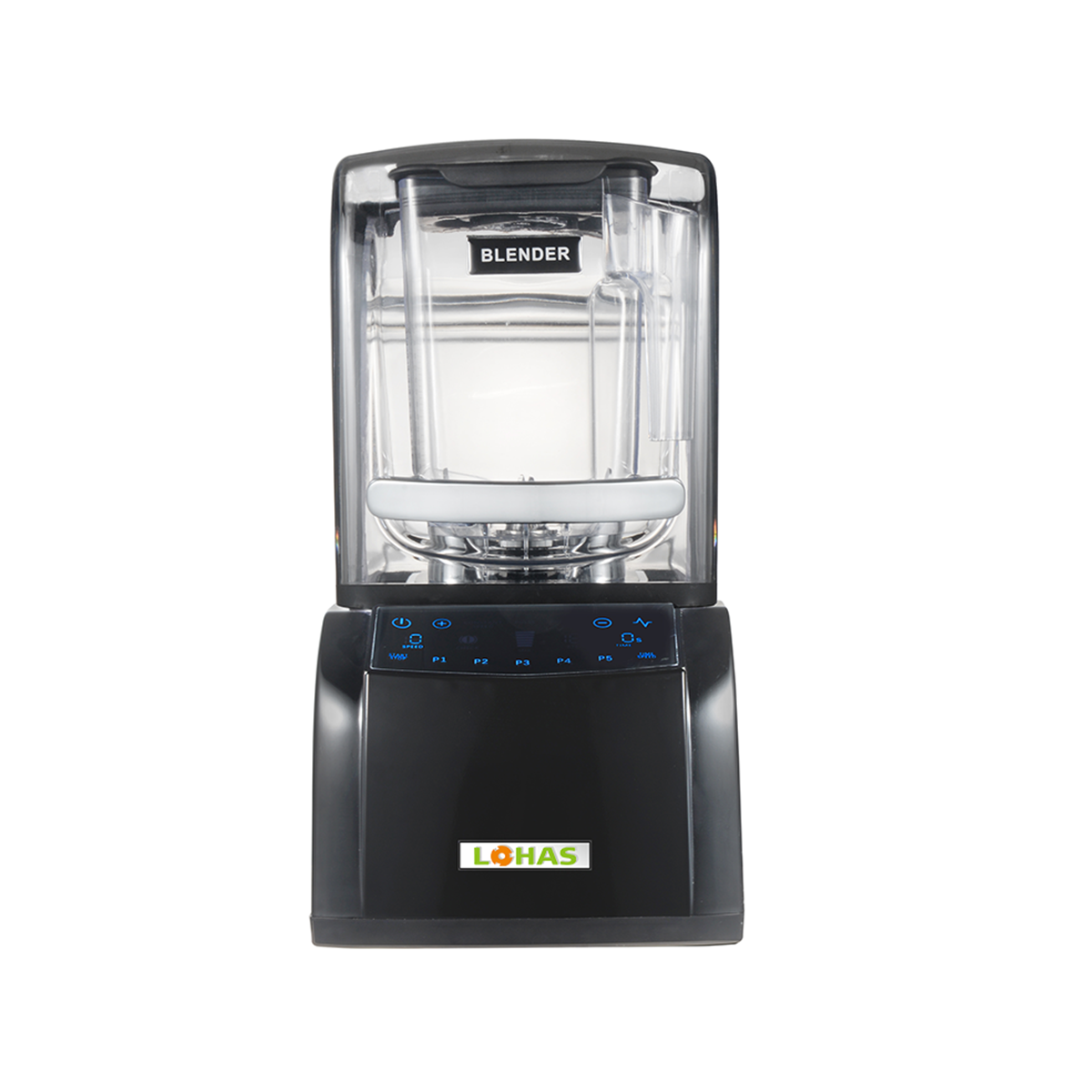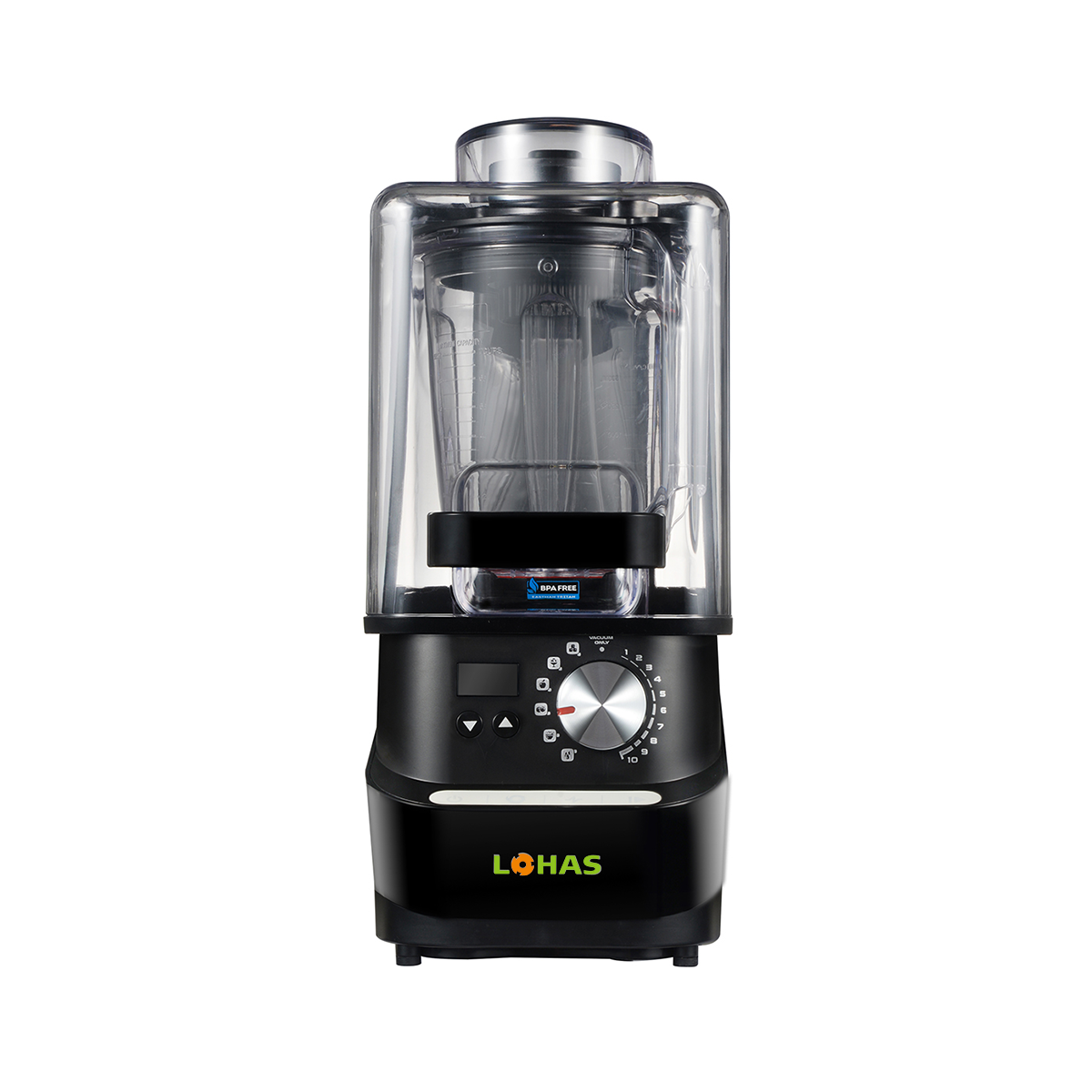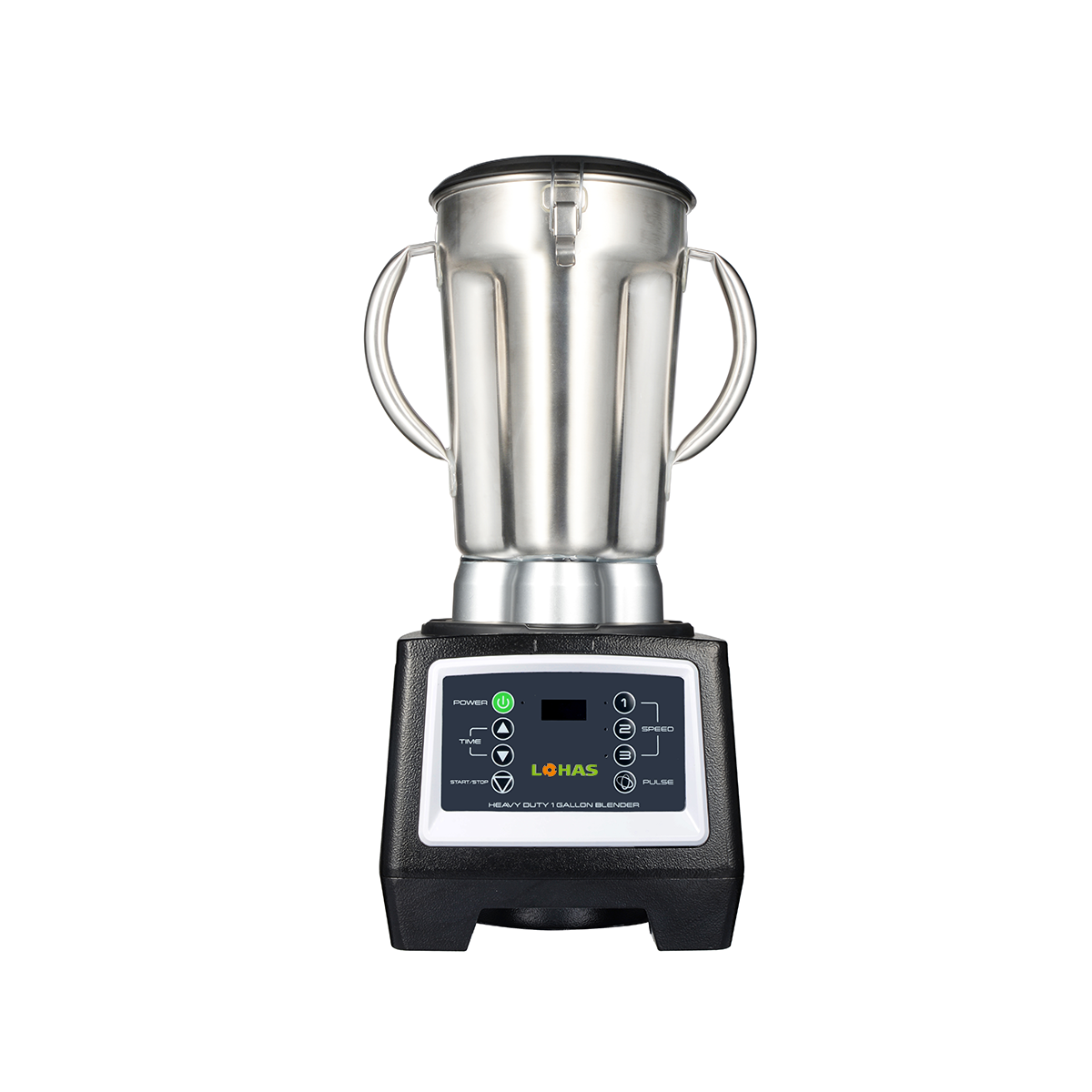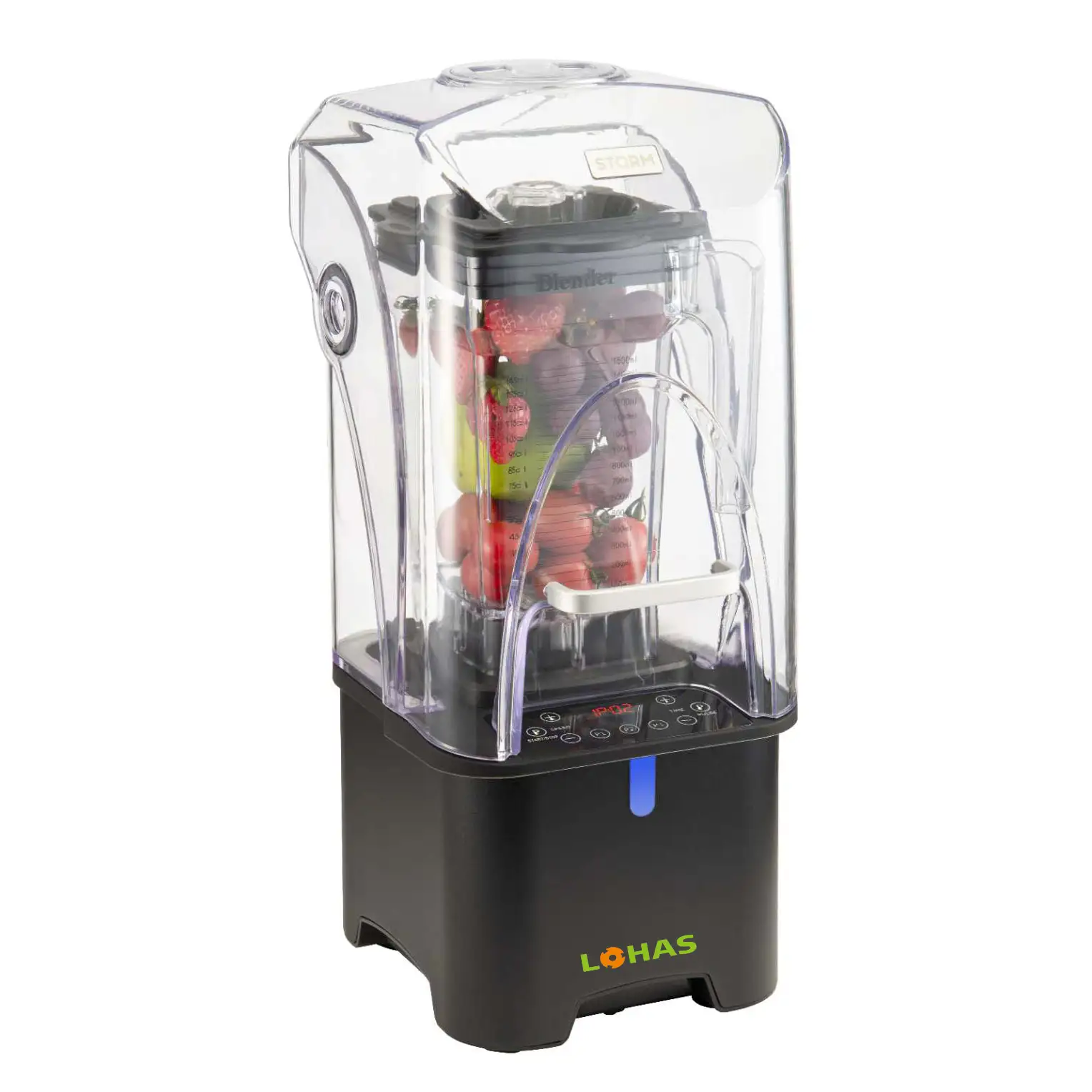Μεταμόρφωση της ροής εργασίας στην κουζίνα με ισχυρά εργαλεία ανάμειξης
Στις επαγγελματικές κουζίνες, όπου η ταχύτητα, η ακρίβεια και η συνέπεια είναι πρωταρχικής σημασίας, το να διαθέτετε τα σωστά εργαλεία μπορεί να κάνει τη διαφορά μεταξύ επιτυχίας και αποτυχίας. Μεταξύ των πιο απαραίτητων εργαλείων είναι ο εμπορικό μπλέντερ . Σχεδιασμένος ειδικά για να καλύπτει τις υψηλές απαιτήσεις των περιβαλλόντων υπηρεσιών εστίασης, ένας εμπορικό μπλέντερ διαθέτει δυνατότητες που υπερβαίνουν κατά πολύ εκείνες των συνηθισμένων οικιακών μίξερ. Αυτές οι μηχανές δεν προορίζονται απλώς για ανάμειξη — στοχεύουν στη βελτιστοποίηση των επιχειρήσεων, στην ενίσχυση της ποιότητας και στην εξοικονόμηση χρόνου.
Αύξηση της ταχύτητας στην προετοιμασία τροφίμων
Κινητήρες υψηλής ισχύος για γρήγορη ανάμειξη
Α εμπορικό μπλέντερ διαθέτει κινητήρες υψηλής απόδοσης οι οποίοι μπορούν να επεξεργαστούν γρήγορα και αποτελεσματικά μεγάλες ποσότητες συστατικών. Αυτές οι μηχανές έχουν σχεδιαστεί να λειτουργούν για μεγάλα χρονικά διαστήματα χωρίς υπερθέρμανση, καθιστώντας τις ιδανικές για συνεχή χρήση κατά τις ώρες αιχμής. Είτε πρόκειται για την πολτοποίηση σούπας, την ανάμειξη smoothies ή την εμαλσίωση σος, ένας επαγγελματικός μίξερ μειώνει σημαντικά τον χρόνο προετοιμασίας.
Μεγάλης χωρητικότητας κανάτες για ανάμιξη σε μεγάλες ποσότητες
Πολλά επαγγελματικά μοντέλα μπλέντερ συνοδεύονται από υπερμεγέθη κανάτες που επιτρέπουν στους μάγειρες να αναμιγνύουν μεγάλες ποσότητες ταυτόχρονα. Αυτό είναι ιδιαίτερα χρήσιμο σε εστιατόρια ή καφέ με μεγάλο ρυθμό εξυπηρέτησης πελατών. Αντί να γίνεται ανάμιξη σε μικρές μερίδες πολλές φορές, το προσωπικό της κουζίνας μπορεί να ολοκληρώσει τις εργασίες σε λιγότερα βήματα, αυξάνοντας τη συνολική παραγωγικότητα και τη ροή εργασίας.
Βελτίωση της συνοχής και της υφής των τροφίμων
Τεχνολογία συγχώνευσης ακριβείας
Τα επαγγελματικά μοντέλα μπλέντερ διαθέτουν συχνά ρυθμιζόμενες ταχύτητες και προγραμματιζόμενους ελέγχους, που επιτρέπουν στους μάγειρες να ρυθμίζουν τη διαδικασία ανάμιξης ώστε να επιτυγχάνουν ακριβείς υφές. Από απαλές πουρές μέχρι χοντροκομμένες σάλτσες, ένα επαγγελματικό μπλέντερ μπορεί να παρέχει συνεχείς αποτελέσματα κάθε φορά. Η συνέπεια αυτή είναι κρίσιμη σε επαγγελματικές κουζίνες, όπου η παρουσίαση και η γεύση πρέπει να πληρούν υψηλά πρότυπα.
Εργαλεία διόρθωσης και αποτελεσματικός σχεδιασμός
Πολλές επαγγελματικές μονάδες μπλέντερ περιλαμβάνουν εργαλεία-τάπερ και ειδικά σχεδιασμένες λεπίδες που εξασφαλίζουν την ολοκληρωμένη επεξεργασία όλων των συστατικών. Αυτά τα εξαρτήματα εξαλείφουν την ανάγκη για διαρκείς διακοπές και χειροκίνητη ανάμειξη, βοηθώντας το προσωπικό της κουζίνας να διατηρεί μια ομαλή λειτουργία. Επίσης, η ομοιόμορφη υφή στα πιάτα αυξάνει την ικανοποίηση των πελατών, ενισχύοντας τη φήμη της επωνυμίας.
Πολυεπιστημοσύνη σε εφαρμογές μαγειρικής
Προσαρμογή σε διαφορετικές ανάγκες μενού
Ένας επαγγελματικός μπλέντερ μπορεί να εκτελέσει ένα ευρύ φάσμα εργασιών πέρα από τη βασική ανάμειξη. Μπορεί να σπάσει πάγο, να αλέσει ξηρούς καρπούς, να αναμίξει ινώδη λαχανικά και ακόμη και να αναμείξει ζύμη, ανάλογα με το μοντέλο. Αυτή η πολυδυναμικότητα σημαίνει ότι οι κουζίνες δεν χρειάζεται να επενδύσουν σε πολλαπλές συσκευές, μειώνοντας το κόστος και εξοικονομώντας πολύτιμο χώρο στο πάγκο.
Υποστήριξη καινοτομίας στις συνταγές
Με έναν επαγγελματικό μίξερ, οι σεφ μπορούν να πειραματιστούν με υφές και συνδυασμούς συστατικών που θα ήταν δύσκολο να επιτευχθούν με συμβατικούς μίξερ. Είτε αναπτύσσουν μια νέα σάλτσα είτε ένα χυμό signature, αυτές οι μηχανές προάγουν την καλλιτεχνική δημιουργικότητα στη μαγειρική, δίνοντας στις επιχειρήσεις υγειονομικής τη δυνατότητα να ξεχωρίσουν σε έναν ανταγωνιστικό τομέα.
Μείωση των αποβλήτων και εξοικονόμηση κόστους
Αποτελεσματική χρήση συστατικών
Η τεχνολογία των επαγγελματικών μίξερ επιτρέπει ακριβή μέτρηση και ανάμιξη, μειώνοντας την υπερβολική χρήση συστατικών. Επειδή αυτοί οι μίξερ μπορούν να επεξεργαστούν πλήρως κάθε συστατικό, χάνεται λιγότερο φαγητό και χρησιμοποιείται περισσότερο από κάθε συστατικό. Αυτό συμβάλλει άμεσα στην εξοικονόμηση κόστους και στον καλύτερο έλεγχο των αποθεμάτων.
Ανθεκτικότητα και μακροπρόθεσμη επένδυση
Η επένδυση σε έναν επαγγελματικό μίξερ σημαίνει επιλογή εξοπλισμού που κατασκευάζεται για να διαρκεί. Κατασκευασμένοι από υλικά υψηλής ποιότητας και με μηχανική σχεδίαση για αντοχή, αυτοί οι μίξερ χρειάζονται λιγότερο συχνή αντικατάσταση ή επισκευή σε σχέση με μίξερ χαμηλότερης ποιότητας. Με την πάροδο του χρόνου, αυτό έχει ως αποτέλεσμα μειωμένο λειτουργικό κόστος και υψηλότερη απόδοση στην επένδυση.
Προώθηση προτύπων υγιεινής και ασφάλειας
Υγιεινά υλικά και εύκολος καθαρισμός
Οι δοχεία και οι λεπίδες των επαγγελματικών μίξερ είναι συχνά κατασκευασμένα από υλικά χωρίς BPA και κατάλληλα για τρόφιμα, τα οποία πληρούν τα πρότυπα απολύμανσης της βιομηχανίας. Τα περισσότερα μοντέλα είναι κατάλληλα για πλυντήριο πιάτων ή έχουν σχεδιαστεί για εύκολη αποσυναρμολόγηση, καθιστώντας τον καθημερινό καθαρισμό γρήγορο και αποτελεσματικό. Αυτό μειώνει τον κίνδυνο διασταυρούμενης μόλυνσης και βελτιώνει την υγιεινή στην κουζίνα.
Ελαχιστοποίηση ατυχημάτων στην κουζίνα
Τα χαρακτηριστικά ασφαλείας είναι προκαθορισμένα σε πολλά επαγγελματικά μοντέλα μπλέντερ, συμπεριλαμβανομένων κλειδωνόμενων καπακιών, προστασίας από υπερφόρτωση και βάσεων αντιολίσθησης. Αυτά τα στοιχεία βοηθούν στην πρόληψη διαρροών, υπερθέρμανσης και ζημιών στον εξοπλισμό, καθιστώντας το περιβάλλον της κουζίνας ασφαλέστερο για το προσωπικό. Μια ασφαλής και αποδοτική κουζίνα αυξάνει την ηθική και την παραγωγικότητα.
Καλύπτοντας τις Απαιτήσεις Κουζινών Υψηλής Παραγωγής
Διαχείριση συνεχούς λειτουργίας
Σε ένα πολυσύχναστο εστιατόριο ή καφέ, ο εξοπλισμός της κουζίνας πρέπει να λειτουργεί συνεπώς υπό πίεση. Τα επαγγελματικά μπλέντερ έχουν σχεδιαστεί για διαρκή χρήση, εξασφαλίζοντας αξιόπιστη απόδοση ακόμη και κατά τις ώρες αιχμής. Η αξιοπιστία αυτή διευκολύνει την εξυπηρέτηση παραγγελιών χωρίς θυσιασία της ποιότητας.
Ενσωμάτωση στις ροές εργασίας της κουζίνας
Ένα επαγγελματικό μπλέντερ μπορεί να ενσωματωθεί ομαλά στους χώρους προετοιμασίας ή στις ροές εργασίας της κουζίνας. Επειδή λειτουργεί γρήγορα και αποδοτικά, επιτρέπει στις ομάδες της κουζίνας να συντονίζονται καλύτερα, μειώνοντας τους χρόνους αδράνειας και τα εμπόδια. Το αποτέλεσμα είναι πιο ομαλή εξυπηρέτηση και ταχύτερη ολοκλήρωση παραγγελιών για τους πελάτες.
Κατασκευή Βιώσιμου Μοντέλου Κουζίνας
Μείωση Της Κατανάλωσης Ενέργειας
Παρά τη δύναμή τους, πολλά μοντέλα επαγγελματικών μπλέντερ σχεδιάζονται με εξοικονόμηση ενέργειας υπόψη. Η προηγμένη τεχνολογία κινητήρων και οι έξυπνοι αισθητήρες βοηθούν στην ελαχιστοποίηση της κατανάλωσης ενέργειας χωρίς να χαμηλώνει η απόδοση. Αυτό συμβάλλει σε πιο βιώσιμη κουζίνα και μειωμένους λογαριασμούς ρεύματος.
Υποστήριξη οικολογικών πρωτοβουλιών
Με τη μείωση των τροφίμων που πηγαίνουν στα σκουπίδια, της κατανάλωσης ενέργειας και της ανάγκης για μίας χρήσης εργαλεία προετοιμασίας, η χρήση επαγγελματικών μπλέντερ συμμορφώνεται με τους στόχους βιωσιμότητας. Τα εστιατόρια που επιδιώκουν να δημιουργήσουν εικόνα οικολογικής συνείδησης μπορούν να βασίζονται σε αυτόν τον εξοπλισμό για να υποστηρίξουν πιο πράσινες επιχειρήσεις, παρέχοντας παράλληλα ποιοτικά αποτελέσματα.
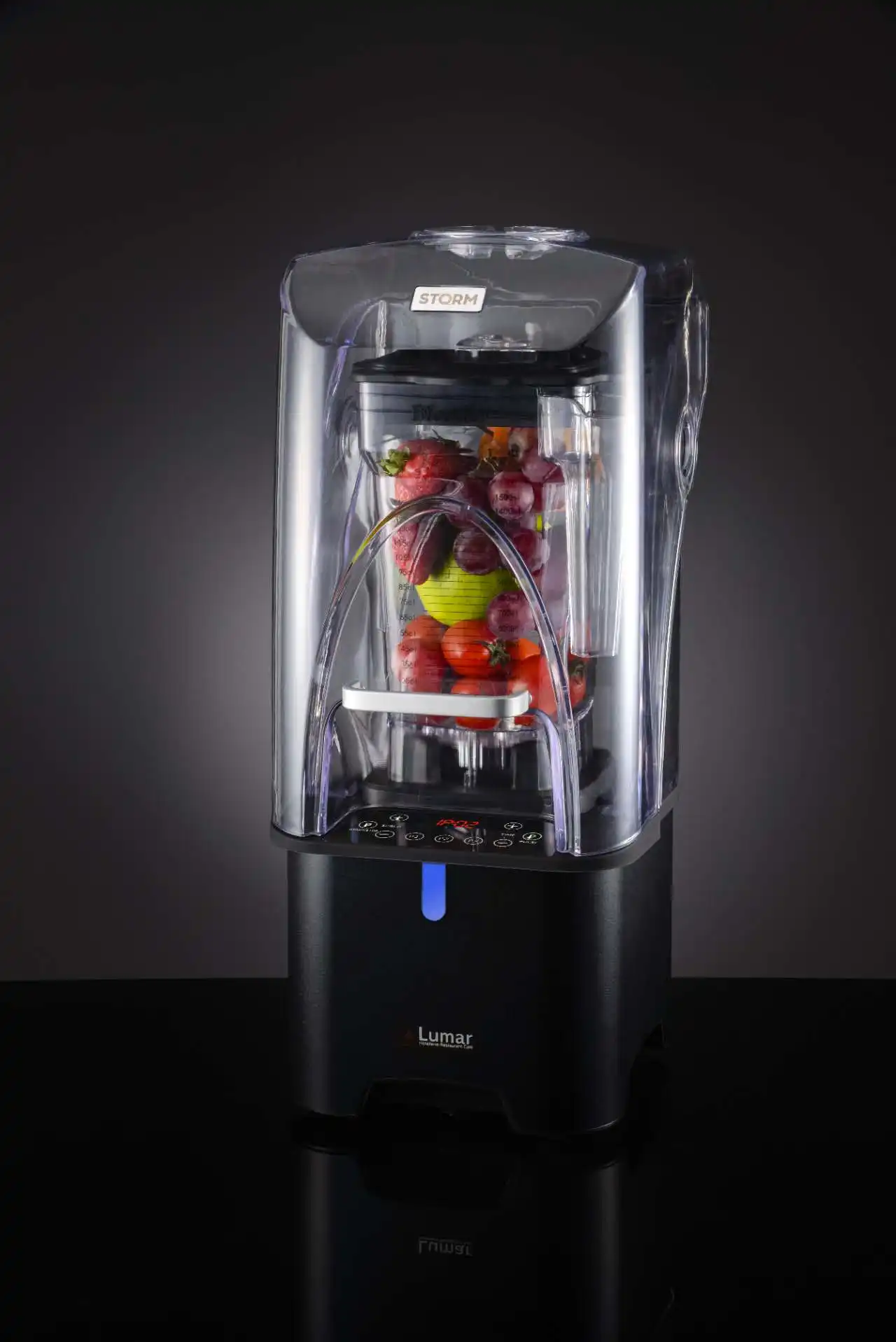
Αύξηση της Ικανοποίησης των Πελατών
Γρηγορότερη εκπλήρωση παραγγελιών
Με έναν επαγγελματικό μπλέντερ, ποτά και πιάτα μπορούν να ετοιμαστούν γρήγορα και με συνέπεια, κάτι που οδηγεί σε ταχύτερη εξυπηρέτηση. Αυτό είναι ιδιαίτερα σημαντικό σε περιβάλλοντα με μεγάλο κόσμο, όπου οι πελατειακές προσδοκίες ως προς την ταχύτητα είναι υψηλές. Οι ικανοποιημένοι πελάτες είναι πιο πιθανό να επιστρέψουν και να αφήσουν θετικές κριτικές.
Υψηλότερη ποιότητα τροφίμων και ποτών
Από ομαλά smoothies μέχρι κρέμες-σούπες, ένας επαγγελματικός μίξερ βελτιώνει τη συνολική ποιότητα των τροφίμων και των ποτών. Η βελτιωμένη υφή, η σταθερή γεύση και η καλύτερη οπτική παρουσίαση συμβάλλουν σε μια ανώτερη εμπειρία γεύσης που κάνει τους πελάτες να επιστρέφουν.
Υποστήριξη της Αποδοτικότητας και Ηθοποιίας του Προσωπικού
Μείωση της Φυσικής Επαρρύπνησης
Οι παραδοσιακές μέθοδοι ανάμειξης μπορεί να είναι επίπονες. Ένας επαγγελματικός μίξερ αυτοματοποιεί σε μεγάλο βαθμό τη διαδικασία, μειώνοντας τη σωματική πίεση στο προσωπικό. Αυτό μειώνει όχι μόνο την κόπωση, αλλά και τον κίνδυνο τραυματισμών από επαναληπτικές κινήσεις, διατηρώντας ένα υγιέστερο εργασιακό περιβάλλον.
Εύκολη εκπαίδευση και χρήση
Τα περισσότερα μοντέλα επαγγελματικών μίξερ είναι φιλικά προς τον χρήστη και απαιτούν ελάχιστη εκπαίδευση. Κατανοητοί χειριστήριοι, προκαθορισμένες λειτουργίες και ανθεκτική κατασκευή τα καθιστούν προσβάσιμα στο προσωπικό όλων των επιπέδων δεξιοτήτων. Η ευκολία χρήσης μειώνει τον χρόνο εξοικείωσης και επιτρέπει στους νέους υπαλλήλους να συμβάλλουν πιο γρήγορα στις επιχειρήσεις.
Ανασαρμόζοντας στις Τεχνολογικές Εξελίξεις
Έξυπνες λειτουργίες ανάμειξης
Ορισμένα μοντέλα επαγγελματικών μπλέντερ διαθέτουν πλέον έξυπνα χαρακτηριστικά, όπως ψηφιακούς χρονοδιακόπτες, σύνδεση Bluetooth και προγραμματιζόμενους κύκλους ανάμειξης. Αυτές οι καινοτομίες διευκολύνουν την τυποποίηση συνταγών και βελτιώνουν τη συνέπεια σε διαφορετικές βάρδιες ή τοποθεσίες.
Επενδύσεις μαγειρικής για το μέλλον
Επιλέγοντας έναν επαγγελματικό μπλέντερ με προηγμένη τεχνολογία, οι κουζίνες εξασφαλίζουν ότι είναι έτοιμες για τις εξελισσόμενες απαιτήσεις της βιομηχανίας. Είτε αυξάνεται η παραγωγή είτε ποικιλία προστίθεται στο μενού, ένας σύγχρονος επαγγελματικός μπλέντερ υποστηρίζει μακροπρόθεσμη προσαρμοστικότητα και ανάπτυξη.
Συχνές ερωτήσεις
Με ποιον τρόπο διαφέρει ένας επαγγελματικός μίξερ από έναν οικιακό μίξερ;
Ένας επαγγελματικός μπλέντερ έχει σχεδιαστεί για χρήση υψηλού όγκου, με πιο ισχυρούς κινητήρες, μεγαλύτερη χωρητικότητα και αυξημένη αντοχή σε σχέση με οικιακά μοντέλα. Μπορεί να χειριστεί πιο δύσκολα συστατικά και συνεχή λειτουργία χωρίς να επηρεαστεί η απόδοση.
Ποιους τύπους τροφίμων μπορεί να επεξεργαστεί ένας επαγγελματικός μπλέντερ;
Οι επαγγελματικές μπλέντερς είναι πολυσύνθετες και μπορούν να αναμιγνύουν σμουθί, ζυμώματα, σάλτσες, πουρέ, πάγο, ξηρούς καρπούς και ακόμη και ζύμες, ανάλογα με το μοντέλο. Οι δυνατές λεπίδες και οι κινητήρες τους τους επιτρέπουν να χειρίζονται εύκολα τόσο μαλακά, όσο και σκληρά συστατικά.
Πώς να καθαρίσω σωστά μια επαγγελματική μπλέντερς;
Οι περισσότερες επαγγελματικές μπλέντερς έχουν σχεδιαστεί για να καθαρίζουν εύκολα. Πολλές είναι ανθεκτικές στο πλυντήριο πιάτων, ενώ άλλες μπορούν να καθαριστούν χρησιμοποιώντας απλά ζεστό νερό και ήπιο απορρυπαντικό που τίθεται στη μηχανή. Η τακτική συντήρηση βοηθά στην παράταση της διάρκειας ζωής του εξοπλισμού.
Είναι επενδυτικά αποδοτική η αγορά μιας επαγγελματικής μπλέντερς;
Ναι, η αγορά μιας επαγγελματικής μπλέντερς είναι επενδυτικά αποδοτική μακροπρόθεσμα. Μειώνει τον χρόνο προετοιμασίας, τα τρόφιμα που πηγαίνουν στα σκουπίδια και τις ανάγκες συντήρησης, ενώ βελτιώνει την ποιότητα και την αποτελεσματικότητα. Με την πάροδο του χρόνου, τα οφέλη υπερβαίνουν κατά πολύ την αρχική επένδυση.
Πίνακας Περιεχομένων
- Μεταμόρφωση της ροής εργασίας στην κουζίνα με ισχυρά εργαλεία ανάμειξης
- Αύξηση της ταχύτητας στην προετοιμασία τροφίμων
- Βελτίωση της συνοχής και της υφής των τροφίμων
- Πολυεπιστημοσύνη σε εφαρμογές μαγειρικής
- Μείωση των αποβλήτων και εξοικονόμηση κόστους
- Προώθηση προτύπων υγιεινής και ασφάλειας
- Καλύπτοντας τις Απαιτήσεις Κουζινών Υψηλής Παραγωγής
- Κατασκευή Βιώσιμου Μοντέλου Κουζίνας
- Αύξηση της Ικανοποίησης των Πελατών
- Υποστήριξη της Αποδοτικότητας και Ηθοποιίας του Προσωπικού
- Ανασαρμόζοντας στις Τεχνολογικές Εξελίξεις
- Συχνές ερωτήσεις

